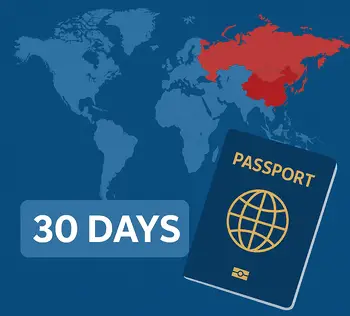
Conflict is an inevitable part of any workplace, and effectively managing it is crucial for maintaining a harmonious and productive environment.
In the Chinese workplace, cultural values, organizational dynamics, and legal frameworks significantly influence how conflicts are perceived and resolved.
This guide provides practical strategies, real-life examples, and best practices to help managers, employees, and expatriates navigate workplace conflicts in China.
1. Understanding the Cultural Context
Chinese culture places a strong emphasis on harmony, respect, and saving face.
These values shape how conflicts are approached and resolved in the workplace.
Key Cultural Values:
- Harmony: Maintaining harmony is a core value in Chinese culture. Conflicts are often seen as disruptions to this harmony and should be resolved quickly and discreetly.
- Respect for Hierarchy: Authority and seniority are highly respected in Chinese workplaces. Conflicts involving superiors require extra care to avoid embarrassment or loss of face.
- Saving Face: Preserving dignity and reputation is crucial. Conflict resolution should focus on solutions that allow all parties to maintain their self-respect.
Practical Example:
Imagine a disagreement between a junior employee and their manager over project deadlines.
Instead of directly confronting the manager, the employee might raise the issue indirectly through a trusted colleague or HR representative to avoid causing embarrassment.
External Resource:
For more on Chinese cultural values, see The Hofstede Insights on China.
2. Identifying the Root Cause of Conflict
Resolving conflicts effectively begins with understanding their root causes.
This requires open communication, active listening, and a non-confrontational approach.
Steps to Identify the Root Cause:
- Encourage Open Communication: Create a safe space where employees feel comfortable expressing their concerns without fear of retribution.
- Practice Active Listening: Pay attention to what is being said, ask clarifying questions, and summarize key points to ensure mutual understanding.
- Adopt a Non-Confrontational Approach: Focus on finding common ground and working toward a mutually beneficial solution.
Example Scenario:
Two team members may disagree over resource allocation. By facilitating a discussion where both parties can share their perspectives, a manager can uncover the underlying issue—such as unclear project priorities—and address it collaboratively.
External Resource:
Learn more about active listening techniques at MindTools.
3. Strategies for Conflict Resolution
Implementing effective strategies can help address conflicts constructively and maintain workplace harmony.
Key Strategies:
- Mediation: Involve a neutral third party to facilitate discussions and help conflicting parties reach a resolution.
- Negotiation: Encourage conflicting parties to work together to find a compromise. This requires a willingness to listen, understand, and collaborate.
- Problem-Solving: Focus on addressing the root cause of the conflict rather than assigning blame. Encourage employees to work together to develop solutions.
Cross-Cultural Comparison:
In Western workplaces, direct communication is often preferred for resolving conflicts. In contrast, Chinese workplaces may favor indirect approaches, such as mediation, to preserve relationships and avoid confrontation.
External Resource:
For tips on mediation, visit SHRM’s guide to workplace mediation.
4. Role of Leadership in Conflict Resolution
Leadership plays a critical role in fostering a positive and collaborative work environment.
Effective leaders can set the tone for how conflicts are managed.
Leadership Best Practices:
- Lead by Example: Handle conflicts calmly and respectfully to set a positive example for employees.
- Provide Training: Offer training programs on conflict resolution and communication skills to equip employees with the tools they need.
- Create a Supportive Environment: Foster a workplace culture where employees feel comfortable addressing conflicts and seeking help when needed.
Example:
A manager who mediates a conflict between two team members by listening to both sides and proposing a fair solution demonstrates the importance of respectful conflict resolution.
External Resource:
For leadership tips, see Forbes’ article on conflict resolution.
5. Legal and Regulatory Considerations
Understanding Chinese labor laws and regulations is essential for handling workplace conflicts appropriately.
Key Legal Points:
- Labor Laws: Ensure conflict resolution processes comply with Chinese labor laws, such as those governing mediation and arbitration.
- Anti-Discrimination Policies: Implement policies to prevent conflicts arising from bias or unfair treatment. This includes providing equal opportunities for all employees.
- Employee Rights: Respect employee rights by providing opportunities for them to voice concerns and participate in conflict resolution processes.
Example:
If an employee files a grievance related to workplace discrimination, the company must follow legal procedures to investigate and resolve the issue fairly.
External Resource:
For an overview of Chinese labor laws, refer to China Briefing’s guide to employment law.
6. The Role of Technology in Conflict Resolution
Technology can play a significant role in facilitating conflict resolution in modern workplaces.
Tools for Conflict Resolution:
- HR Platforms: Tools like BambooHR or DingTalk can help document conflicts, track resolutions, and facilitate communication.
- Anonymous Feedback Systems: Platforms like Officevibe allow employees to share concerns anonymously, helping managers identify potential conflicts early.
External Resource:
Explore HR software options at Gartner’s HR software reviews.
7. Best Practices for Conflict Resolution
To enhance the effectiveness of conflict resolution, consider these best practices:
- Establish Clear Policies: Develop clear procedures for handling conflicts to ensure consistency and fairness.
- Conduct Regular Training: Equip employees with conflict resolution and communication skills through regular training sessions.
- Implement Feedback Mechanisms: Use feedback systems to gather input from employees on conflict resolution processes and identify areas for improvement.
Employee Perspective:
Employees value conflict resolution processes that are transparent, fair, and inclusive.
Involving employees in developing policies and procedures can increase their trust in the system.
External Resource:
For insights on workplace policies, see SHRM’s guide to workplace conflict.
Conclusion
Handling conflict in the Chinese workplace requires a nuanced approach that considers cultural values, organizational dynamics, and legal requirements.
By understanding the cultural context, identifying the root cause of conflicts, and implementing effective resolution strategies, managers and employees can create a positive and collaborative work environment.
Embracing these best practices will foster a culture of respect, harmony, and continuous improvement in your organization.


